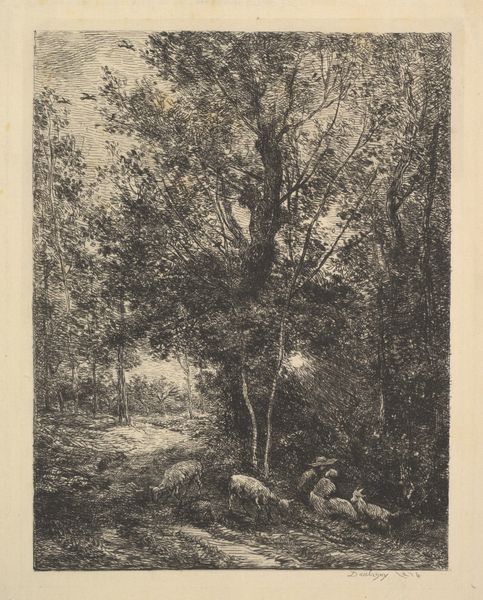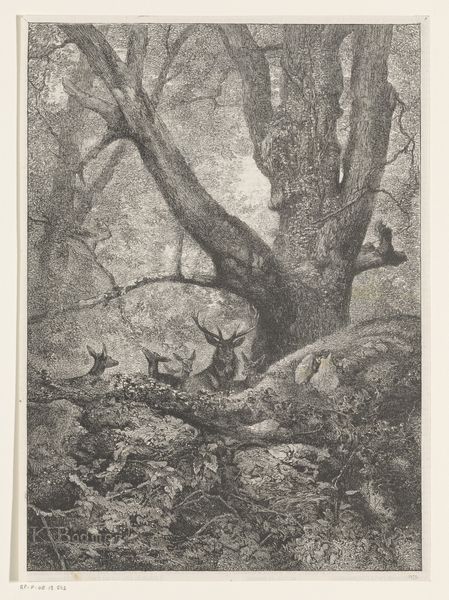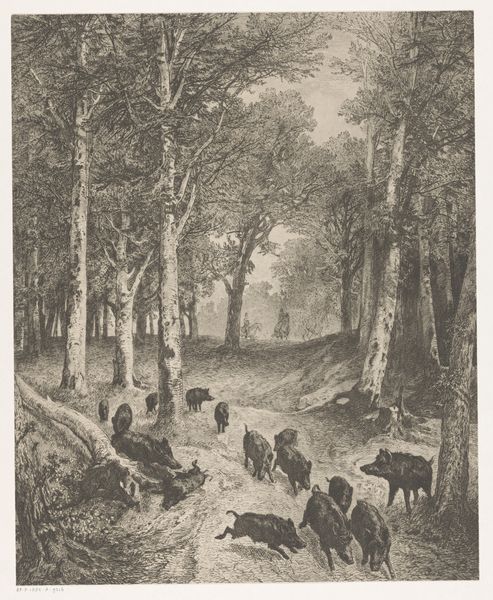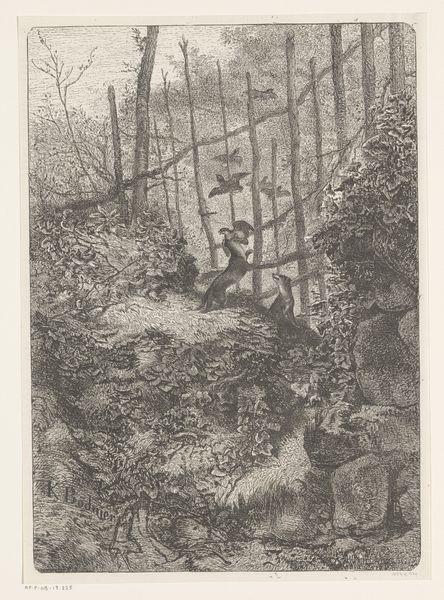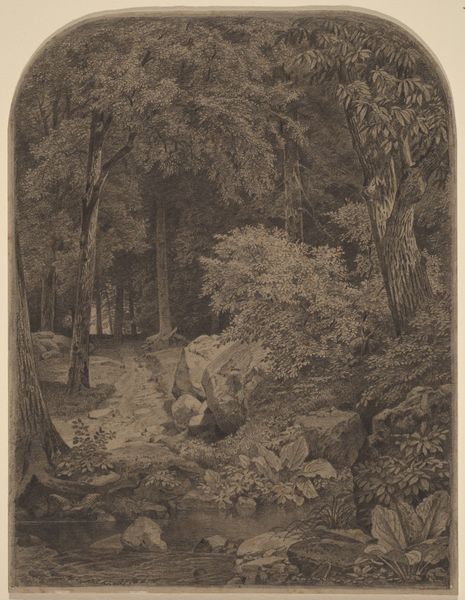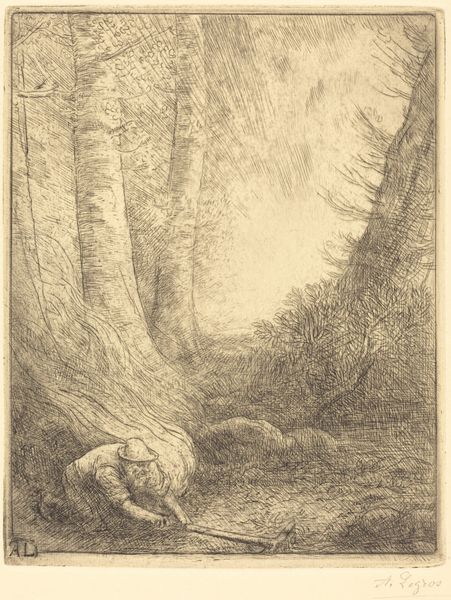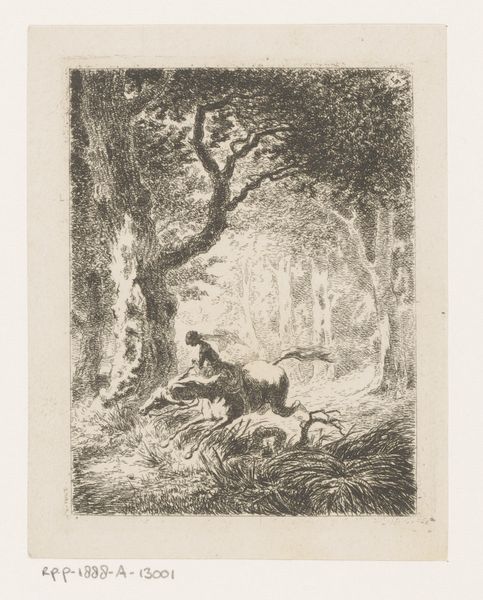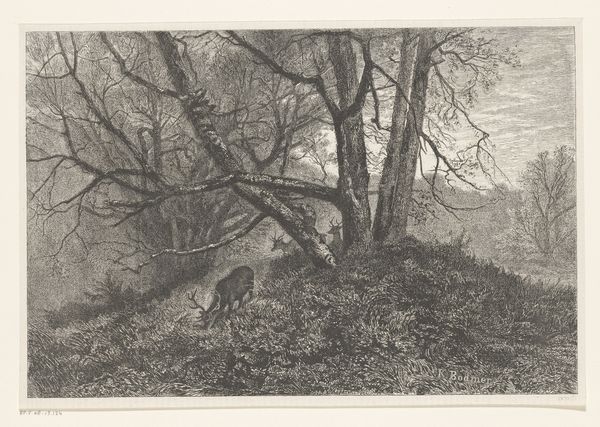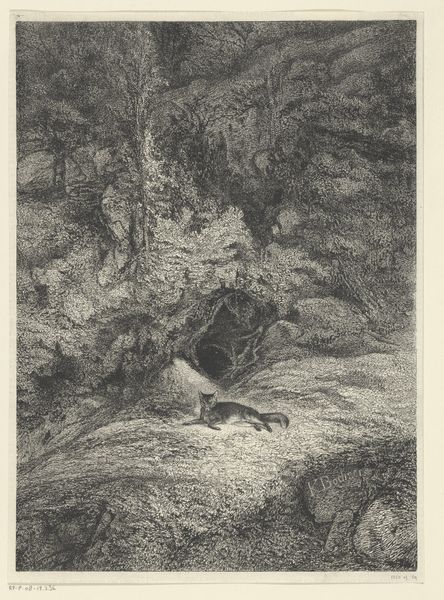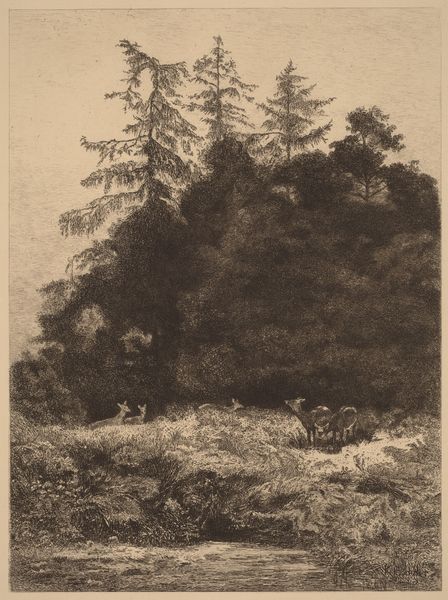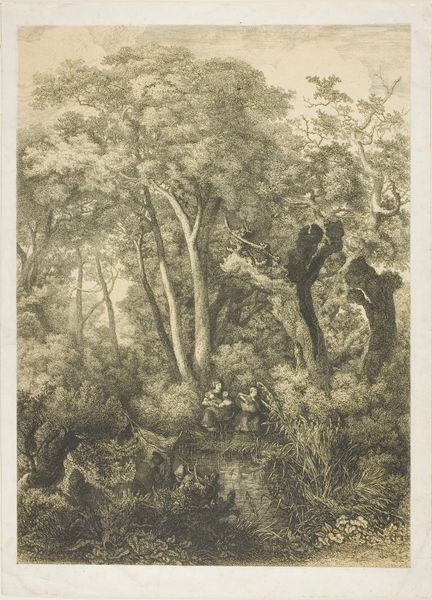
Dimensions: height 426 mm, width 357 mm
Copyright: Rijks Museum: Open Domain
Curator: This drawing, entitled “Bosgezicht met twee vechtende herten,” or "Wooded Landscape with Two Fighting Deer," was created by Karl Bodmer, likely sometime between 1850 and 1885. Editor: It's strikingly dramatic. The darkness of the forest closing in on this brutal scene of two stags battling is almost suffocating. Curator: Bodmer's interest lies in representing the drama of nature, the raw struggle for survival, echoing larger questions about social Darwinism that permeated the era's intellectual circles. Editor: It makes me think about toxic masculinity. The inherent violence enacted by males fighting for dominance, especially within this natural landscape that perhaps symbolizes freedom... Curator: That is definitely a pertinent lens through which to analyze Bodmer’s composition. Romanticism often idealized nature, but here we see a stark, almost hyper-realistic depiction of its darker aspects. Editor: Look how the artist renders the onlookers: they seem completely removed from the fight, not disturbed, indifferent. They embody silent witness. It’s as if the artwork wants us to confront not just animal aggression, but how that primal urge continues to impact social power structures even today. What are your thoughts on this observation? Curator: Indeed, thinking about power dynamics helps to connect Bodmer's artistic statement to questions surrounding political conflicts, particularly class struggle and societal dominance during a period marked by revolutions and rising social unrest. Editor: This intense scene almost romanticizes aggression in a way. Curator: Yet it may also express concern with what results from these struggles, reflecting fears that nature becomes merely an arena to perpetuate toxic dominance. Editor: Seeing how it anticipates similar ideas of patriarchal order really sheds a light on how artistic visual imagery can have such lasting social importance. Curator: By delving into these socio-political currents of the time, and connecting it with today’s sociopolitical concepts of power, gender and identity, we allow these drawing to spark complex reflections on how the world we perceive today relates back to an understanding from our collective history.
Comments
No comments
Be the first to comment and join the conversation on the ultimate creative platform.

